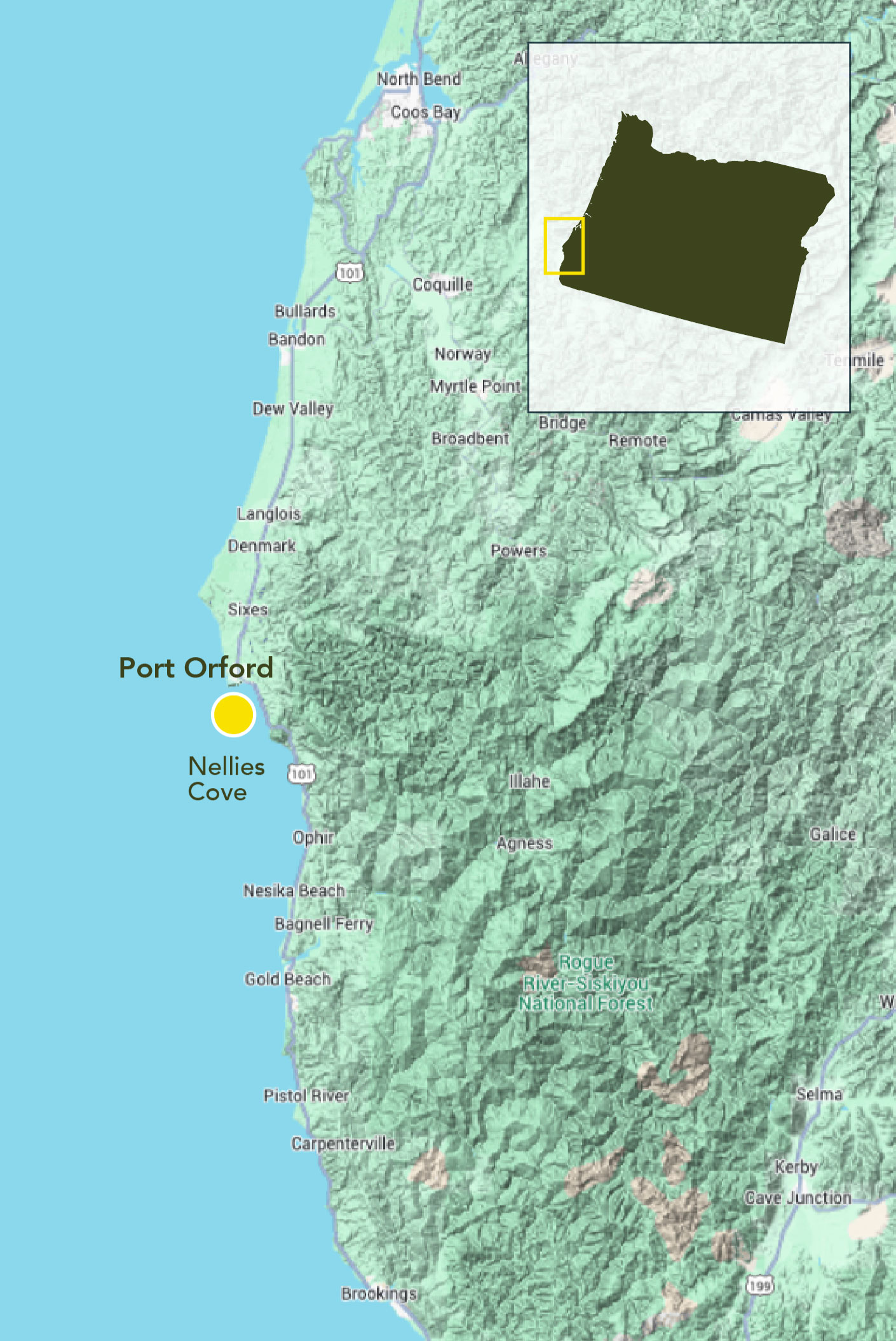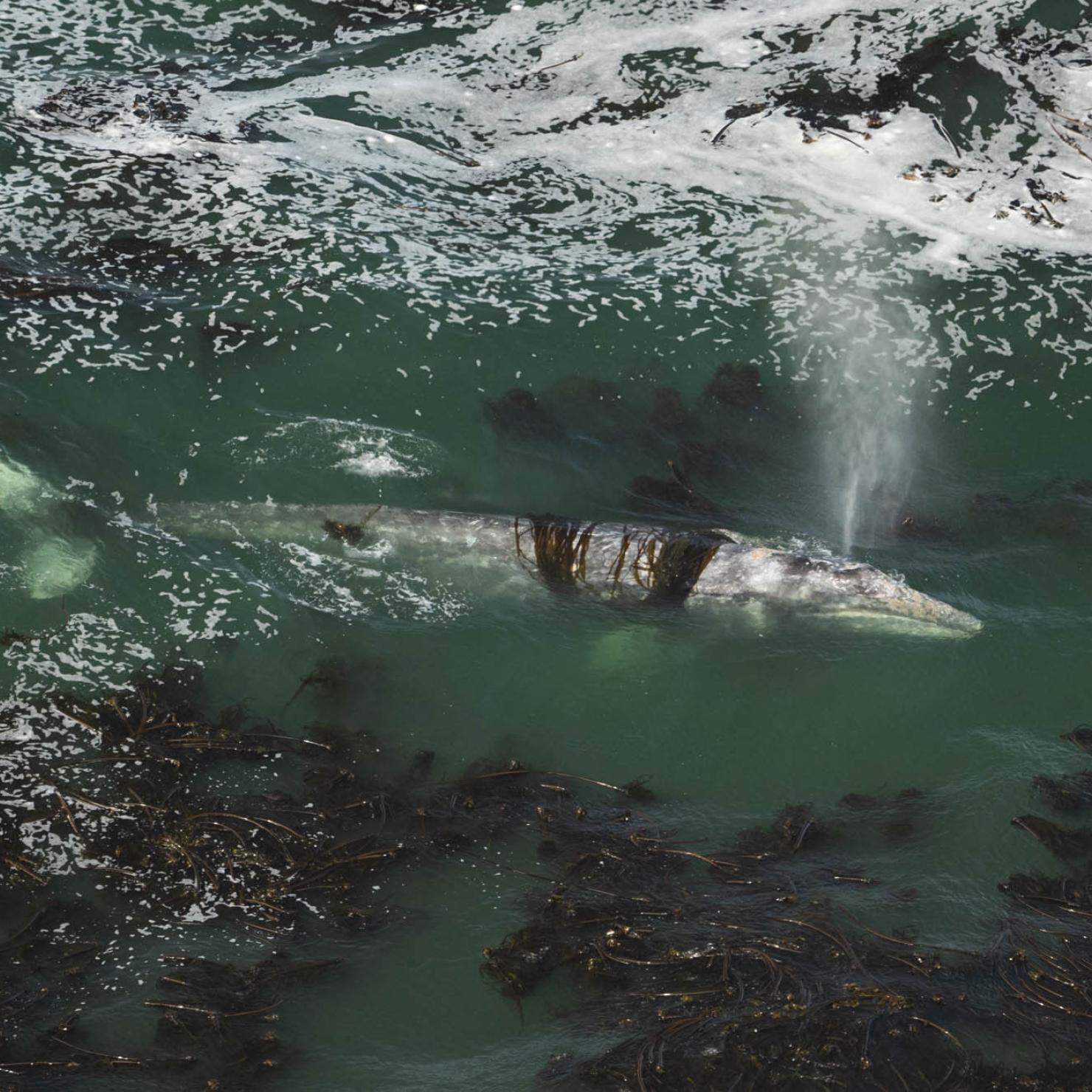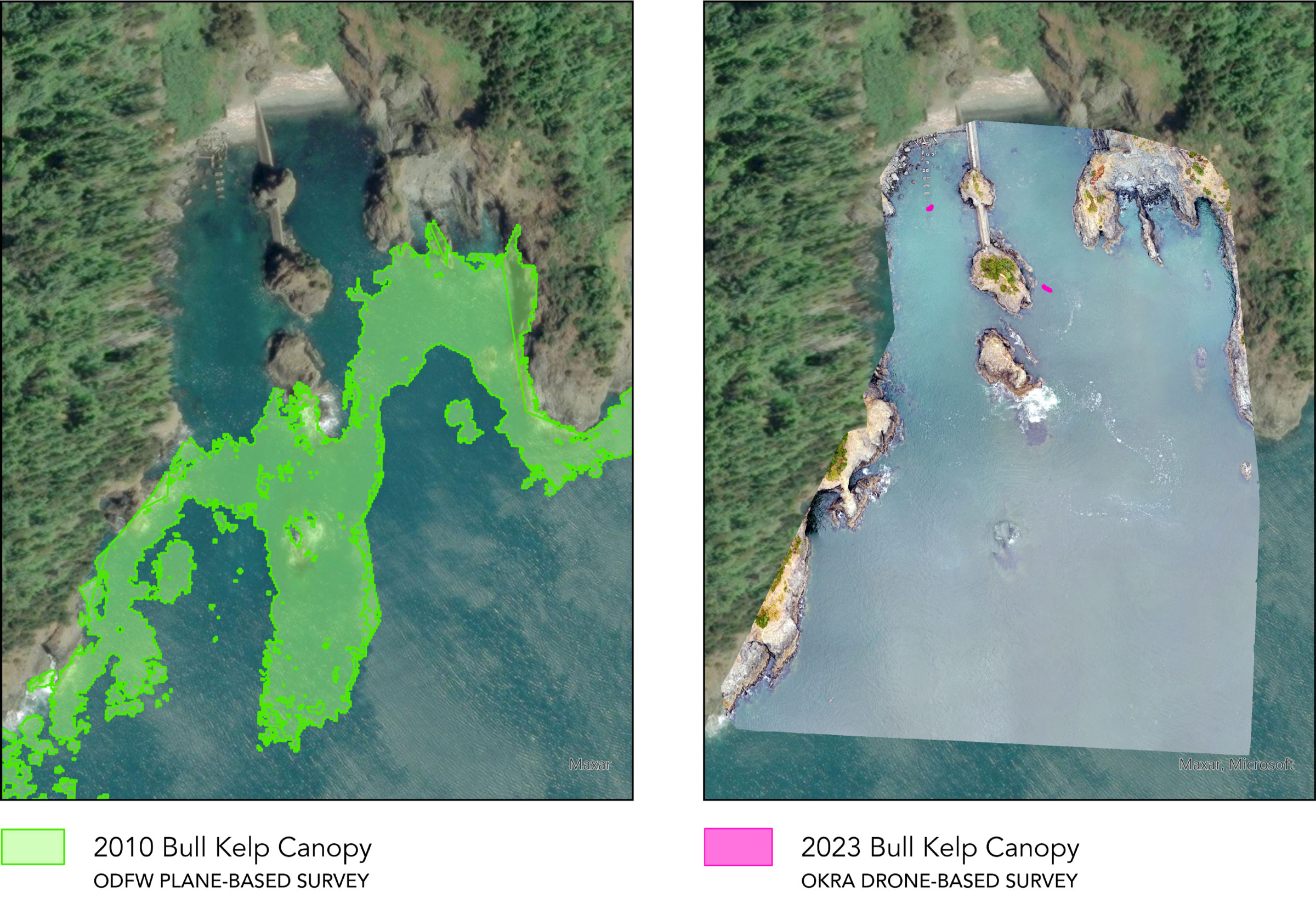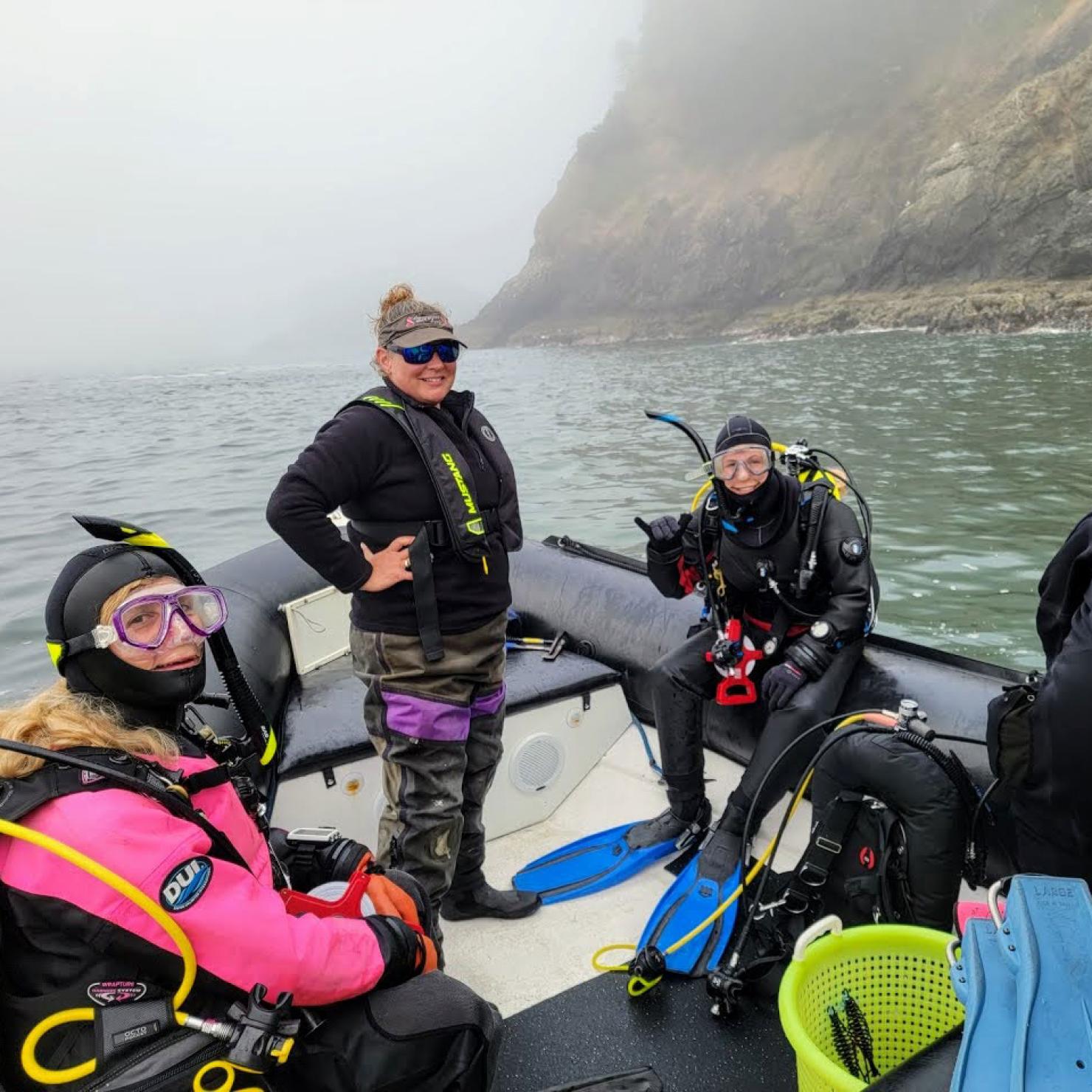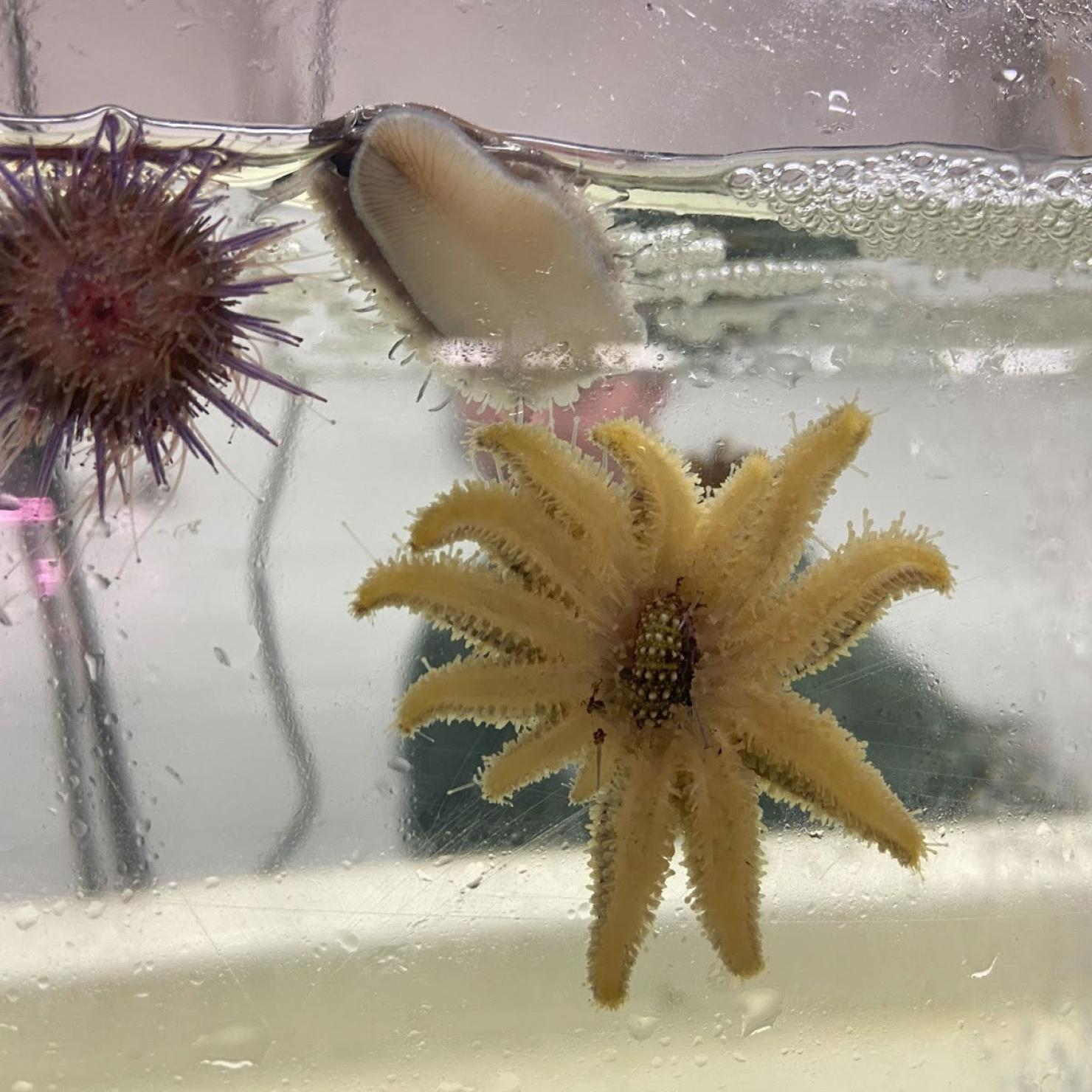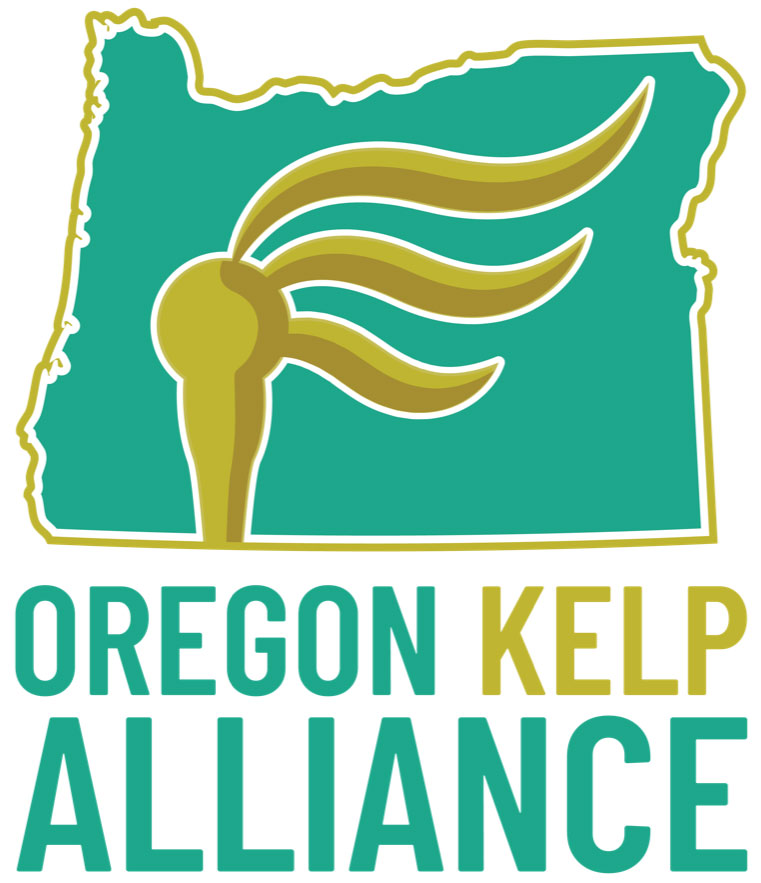Project Background
Nellie’s Cove was one of the first places locals in Port Orford began to notice the changes in kelp forests. The cove is a place that most hold dear to their hearts, a place where people would paddle their sea kayaks and pull up on a bull kelp bed so thick and healthy it kept their boat in place to fish for that evening's dinner. The cove is protected due to its south facing beaches and towering rocky cliffs and once supported a habitat seemingly in balance to produce plenty of fish, attract whales, and give harbor seals an obstacle course to race through as they forage for dinner.
It wasn’t until 2017 that the urchin divers, kayakers and fishermen noticed that this cove was starting to turn from a healthy kelp forest into what’s now known as an urchin barren. Urchin divers were also noticing similar changes at prime urchin fishing grounds at Orford Reef. An urchin barren is an underwater desert full of purple urchins (Strongylocentrotus purpuratus) that have eaten their way through the kelp forest, sparking a whole lot of questions and research and a response plan to not only protect the forests that remain but also rehabilitate the declining kelp forests off the Oregon coast.




